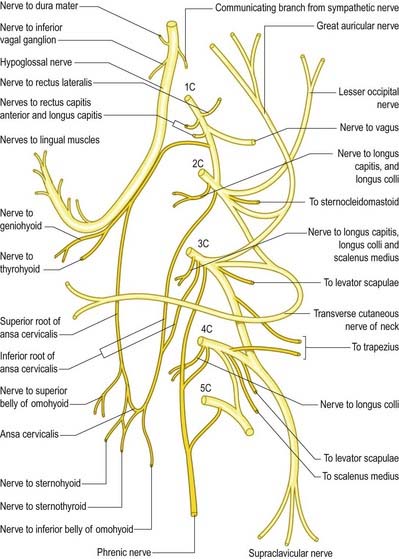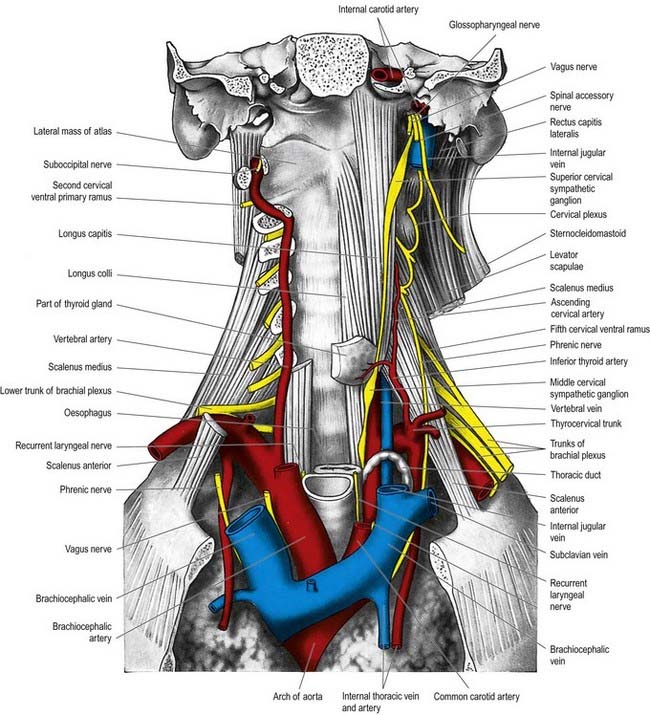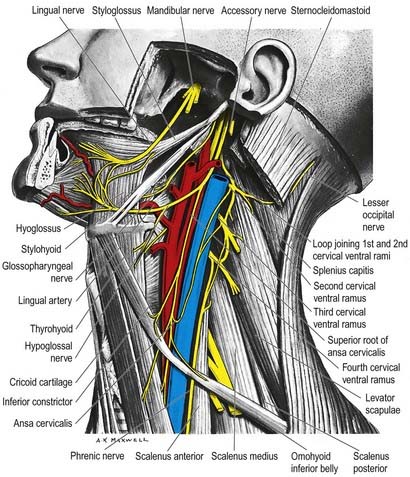Chapter 17 Cervical Plexus
The cervical plexus is formed by the ventral rami of the upper four cervical nerves, and it supplies some neck muscles, the diaphragm and areas of skin on the head, neck and chest (Figs 17.1–17.3; see also Fig. 11.10). It is situated in the neck opposite a line drawn down the side of the neck from the root of the auricle to the level of the upper border of the thyroid cartilage. It is deep to the internal jugular vein, the deep fascia and sternocleidomastoid, and anterior to scalenus medius and levator scapulae. Each ramus, except the first, divides into ascending and descending parts that unite in communicating loops. From the first loop (C2 and C3), superficial branches supply the head and neck; cutaneous nerves of the shoulder and chest arise from the second loop (C3 and C4). Muscular and communicating branches arise from the same nerves. The branches are superficial or deep. The superficial branches perforate the cervical fascia to supply the skin, whereas the deep branches generally supply the muscles. The superficial branches either ascend (lesser occipital, great auricular and transverse cutaneous nerves) or descend (supraclavicular nerves). The deep branches form medial and lateral series.
Stay updated, free articles. Join our Telegram channel

Full access? Get Clinical Tree











